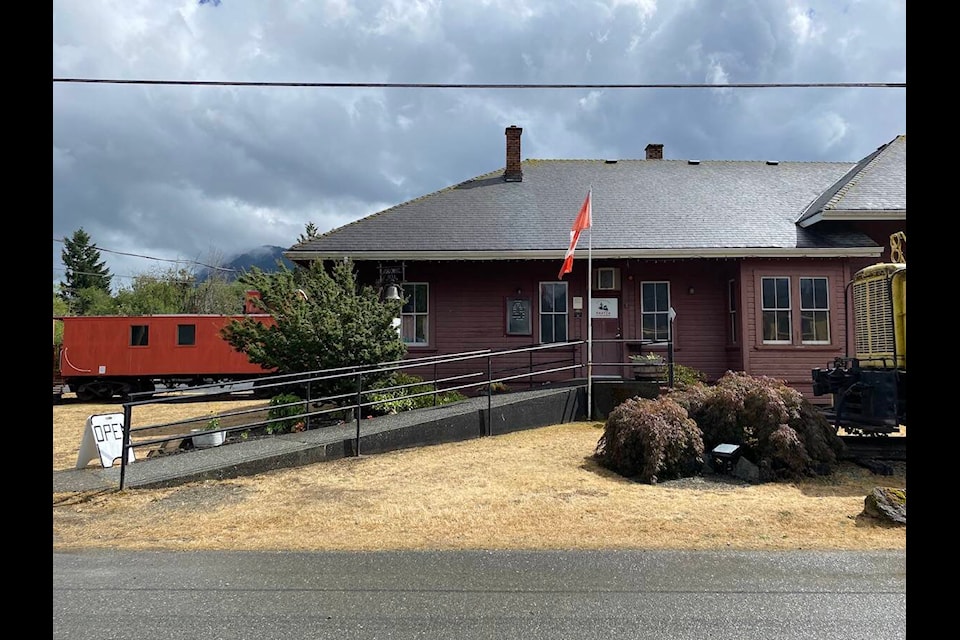Throughout history many individuals have affected positive change. Darshan Singh Sangha was one of them.
The Kaatza Historical Society, BC Labour Heritage Centre, and the Hari Sharma Foundation are collaborating together to unveil a heritage plaque in honour of Sangha in front of the Kaatza Station Museum in Lake Cowichan on Aug. 15, at 1 p.m., featuring a ceremony with speakers, followed by refreshments.
READ MORE: Kaatza Station Museum wins prestigious tourism award
“It’s a great honour for the museum,” said Kaatza Museum archives and collaborations coordinator Henry John. “It’s important for us to recognize union history, as it is a big part of what our museum does. The IWA was one of the reasons why Lake Cowichan was such a prosperous town in the ’50s, ’60s, and ’70s. The labour movement really created this town, which is why any IWA organizer deserves recognition here, but Darshan especially so, because of his contributions to anti-racism to unionizing across racial boundaries.”
Sangha was a union organizer and officer with the International Woodworkers of America from 1941 to 1947 who brought South Asian workers into the union, where they became vital to the strength of B.C.’s labour movement. This was a time where mill bosses used racial divisions as a reason to underpay workers, with rates varying between Caucasian workers and those that were South Asian, and Chinese. Bosses at this time would also use racialized workers as strike breakers.
In the late 1930s Sangha was a student at UBC but upon being introduced to communist literature his life changed course. He became a mill worker, and a part of communist circles, which then led to his involvement with the IWA where he was a member of Local 118 based out of Victoria. The IWA has a lot of history in Cowichan. John adds that the Rounds camp near Gordon River was the first unionized logging camp in British Columbia, which happened in the early 1930s, before the IWA was formed in the late 1930s.
Sangha, who fought for those who experienced considerable racism and discrimination, was very active in Cowichan and was also one of the organizers for ‘The Trek to Victoria’ which happened in 1946, where loggers and mill-workers marched to Victoria over contract issues and getting the union recognized. John says the work Sangha did with bringing South Asians and others into the union was huge in terms of combating racism.
“He was incredibly successful in bringing mainly South Asian workers, most who were Punjabi, into the union,” said John. “He is an incredibly important person for Punjabi Sikhs in Canada, and for the union movement as a whole.”
Under Sangha’s leadership (he was most active in 1943 and 1944) South Asian Canadian union members became vital to the strength and diversity of British Columbia’s labour movement. His influence also played a part in the former Youbou mill becoming the first fully unionized mixed-race mill in British Columbia.
John, who is a historian by training and has been involved with the museum since 2020, shared that when Sangha was organizing in that area, the mill bosses found out what he was doing and summoned him to the office. They were in the process of throwing him out but upon going outside, saw all the mill workers had stopped working to stand in solidarity.
“His contributions were incredibly important,” said John. “The period which Darshan was organizing was the greatest period of growth in the IWA in British Columbia, and pretty much in its history.”
Once independence was granted from the British Empire, Sangha returned to India in 1948 and was elected to the state legislature of Punjab, and went by the name Darshan Singh the ‘Canadian.’ He spoke out about the Punjabi separatist movement and even wrote a book on it which led to his assassination in Punjab, India by ultra-nationalists in 1986.
The International Woodworkers of America annex opened out of the Kaatza Station Museum in 2019, and they are thrilled to be home to the posthumous plaque in Sangha’s honour.
“I think that this plaque will not only recognize all that has been accomplished through the IWA, but it is also a step for bringing more diversity into our museum’s programming,” said John.
chadd.cawson@cowichanvalleycitizen.com
Like us on Facebook and follow us on Twitter.
